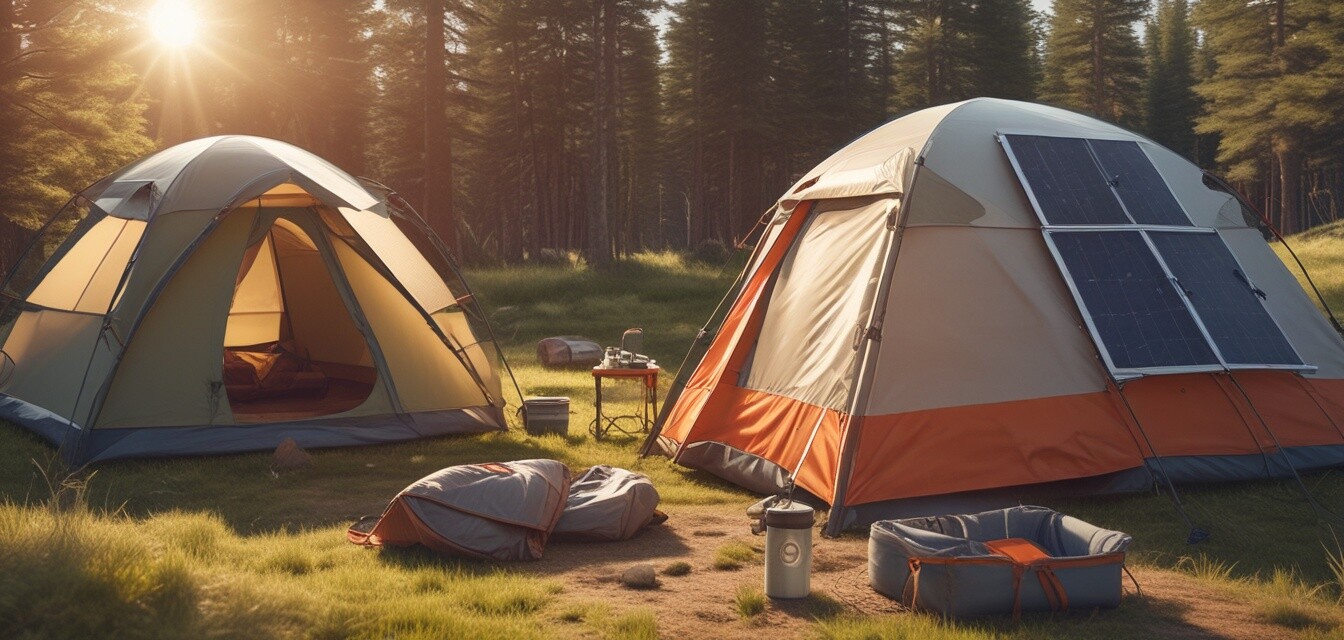
Best practices for solar campers
Key Takeaways
- Understanding solar energy components is essential for efficient camping.
- Proper placement of solar panels can significantly increase energy output.
- Maintaining gear will prolong lifespan and efficiency.
- Being mindful of weather conditions will enhance your camping experience.
- Familiarize yourself with the solar products relevant to your needs.
Embarking on a camping adventure with solar gear opens up a world of possibilities. From charging devices to powering lights, solar technology enhances your time spent in nature. However, to maximize the benefits of your solar equipment, it is crucial to understand and implement best practices. This guide provides essential tips for using solar gear effectively and efficiently while enjoying the great outdoors.
Understanding solar energy components
Your solar camping setup typically consists of solar panels, a battery system, and various devices that rely on solar power. Understanding these components is vital to ensure a smooth camping experience.
| Component | Description |
|---|---|
| Solar Panels | Devices that convert sunlight into electricity. |
| Batteries | Store energy collected from solar panels for later use. |
| Charge Controllers | Protect batteries from overcharging and regulate the energy flow. |
| Inverters | Convert DC power stored in batteries to AC power for devices. |
Placement of solar panels
Maximizing the sunlight exposure of your solar panels is critical for their performance. Consider the following tips:
- Location: Set them up in an open area, free from shade from trees and other obstacles.
- Angle: Adjust the angle of the panels to face the sun. A good rule of thumb is to tilt them at a 30-degree angle.
- Rotation: If camping for extended periods, rotate panels to follow the sun’s path.
Charging and maintenance of gear
To ensure optimal performance, routine maintenance of your solar gear is crucial. Here are some best practices:
Tips for charging and maintenance
- Keep solar panels clean to avoid dust and dirt buildup.
- Check all connections and wiring regularly for wear and tear.
- Store batteries in a cool, dry place when not in use.
- Charge batteries fully before using your solar gear to prevent damage.
- Use proper adapters to minimize energy loss during charging.
Weather considerations
Weather can greatly impact your solar energy efficiency. Keep these considerations in mind:
- Plan for rainy days: Have backup energy sources if you expect cloudy weather.
- Consider temperature: Solar efficiency decreases in extreme heat or cold, so monitor your panels’ performance.
- Be prepared for wind: Secure your equipment to prevent damage if strong winds are expected.
Familiarizing with solar products
Knowing the right solar products for your trip can enhance your camping experience. Here are some product categories to consider:
| Product Category | Description |
|---|---|
| Portable Solar Panels | Easy-to-transport panels ideal for camping trips. |
| Solar Camping Tents | Tents with built-in solar features that generate power. |
| Solar Cookers & Grills | Cook food using the sun's energy, reducing the need for fuel. |
| Solar Lanterns & Lights | Illuminate your campsite with renewable energy. |
| Solar-Powered Backpacks | Carry energy-generating gear on the go. |
| Solar Showers | Enjoy hot showers warmed by solar energy. |
Conclusion
By following these best practices, you can maximize the potential of your solar gear for a more enjoyable camping experience. Embrace the freedom of solar-powered adventures while being equipped to handle nature’s challenges. Remember to continually engage with our insightful resources within the Buying Guides category to refine your outdoor activities. With the right tips and knowledge, solar camping can be both efficient and rewarding!